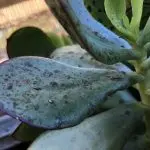Tiny Black Bugs In Plant Soil- Everything You Need to Know
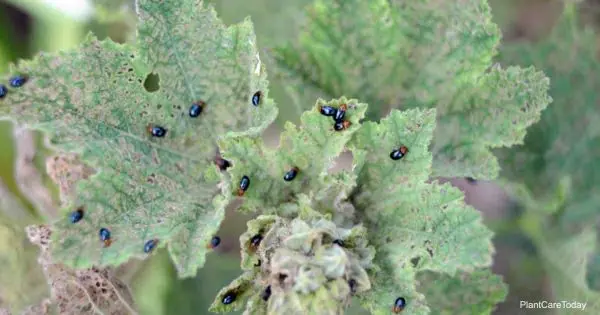
Houseplants will be smiling until you fail to care properly. Keeping the plant and plant-soil neat and clean will help them from pests and insects.
Not only this, if you fail to ensure proper watering, sunlight, and fertilization, your plants will indicate unusualities.
However, if your concern is the tiny black bugs in plant soil, then you are luckily found the right place.
Because this well-crafted article will help you to know the identification, reason, and solutions to this problem.
Without further ado, let’s get into the main discussion.
4 Most Common Tiny Bugs in Plant Soil
If you find tiny, little bugs in plant soil, then it is high time to take some actionable steps against the bugs.
Pest infestations can spread so fast that you may find it difficult to control them.
For this, you need quick soil bugs identification and prevention will be the best option. However, if you already have seen little bugs in plant soil, then there are still ways. We’ll discuss it all one by one.
Fungus Gnats
If you are wondering what these tiny black bugs in my plant soil, the first name that comes to here is fungus gnats.
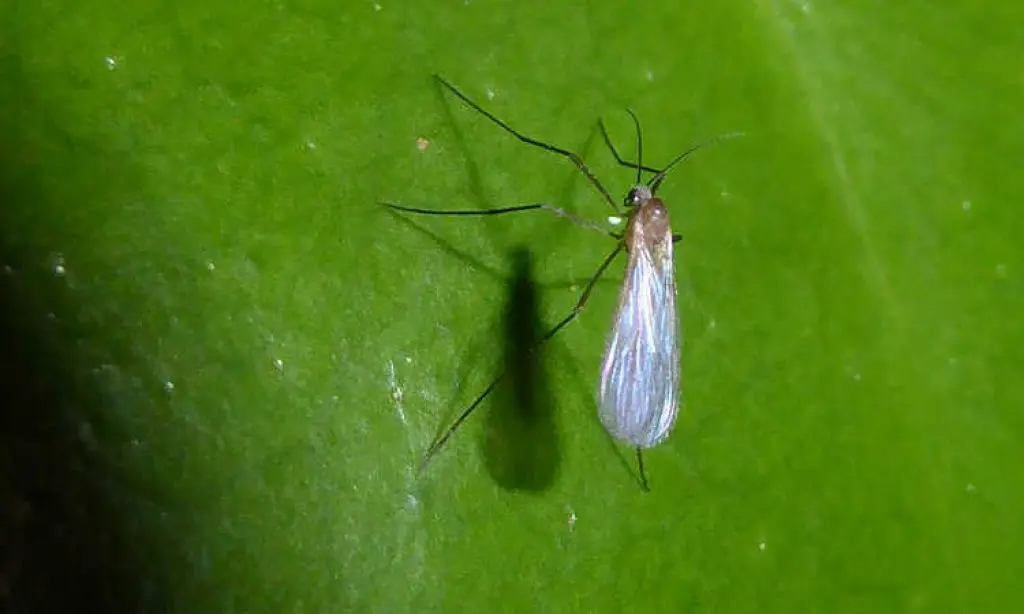
Most of the gardeners know this name because they are one of the most common and pesky houseplant pests. The worse news is, fungus gnats can attack any soil-grown plant.
Identification
You will find the black, tiny bugs either crawling around the potting soil or flying around the plants. They live in the soil and also reproduce in the soil.
Adult fungus gnats lay eggs in the soil and larvae will come to feed on roots as well as organic matter presented in the soil.
A point worth mentioning here, fungus gnats look almost the same as fruit flies. Many gardeners mistake fungus nut problems with fruit flies. But they are totally different.
So, how can you be sure what’s what?
If you see the gnats fly around the fruit or your kitchen’s garbage disposal, then they are fruit flies.
On the other hand, if you find the tiny black bugs in plant soil and often flying around the houseplants, they are fungus gnats. Fungus gnats have no interest in fruit.
What Will Fungus Gnats Do to Your Plants?
The good news is, fungus gnats do not kill plants. What they normally do is to eat rotting roots. But if the infestation is heavy, they will damage the roots.
Although fungus plants will not necessarily kill your plants, yet if tiny black bugs eat your plant roots, that’s a problem. So, getting rid of them is important.
But ‘where do they come from?’ you need to know the answer first. They can fly to your houseplants through an open door or window.
Moreover, they can be in the soil where you planted a newly purchased plant or in the bag of potting mix which you brought indoors.
How to Get Rid of Fungus Gnats?
‘How do I get rid of gnats in my potted plants?’ or ‘How to get rid of gnats in the potting soil bag?’ If these are your questions, let’s see the answers.
Adult fungus gnats will survive for only a few days. The problem will vanish if all of the larvae are dead. So, you do not have to apply toxic pesticides to get rid of them.
Let’s see what you have to do:
- Fungus gnats can be annoying especially if overwatering occurs. They lay eggs in the moist soil. So, they will not survive if the soil’s dry. So, the first thing you can do is control soil moisture.
- Using bright yellow sticky traps is an efficient bugs control method. This will work great to attract as well as capture the ADULT gnats. Yes, it will only work for the adult phage (not larvae). However, if you observe them at the adult stage, using this will help.
- Use organic pesticidal soap or neem oil into the top of your soil for killing gnats in potted plants.
- Remove the soil that is infested by gnats. Remove and replace it with new potting soil.
- Using soil covers on the top inch of the soil will work great. The soil cover can be sand’s layer, decorative moss cover, or gravel.
- Avoid reusing potting soil. And, when you repot the plants, try to use fresh potting soil.
So, yes, you can get rid of fungus gnats that easily!
Springtails
If you notice tiny silver bugs in houseplant soil then you may encounter springtails.
They are little hexapods and their body contains a protein that helps them to survive severe winter temperatures.
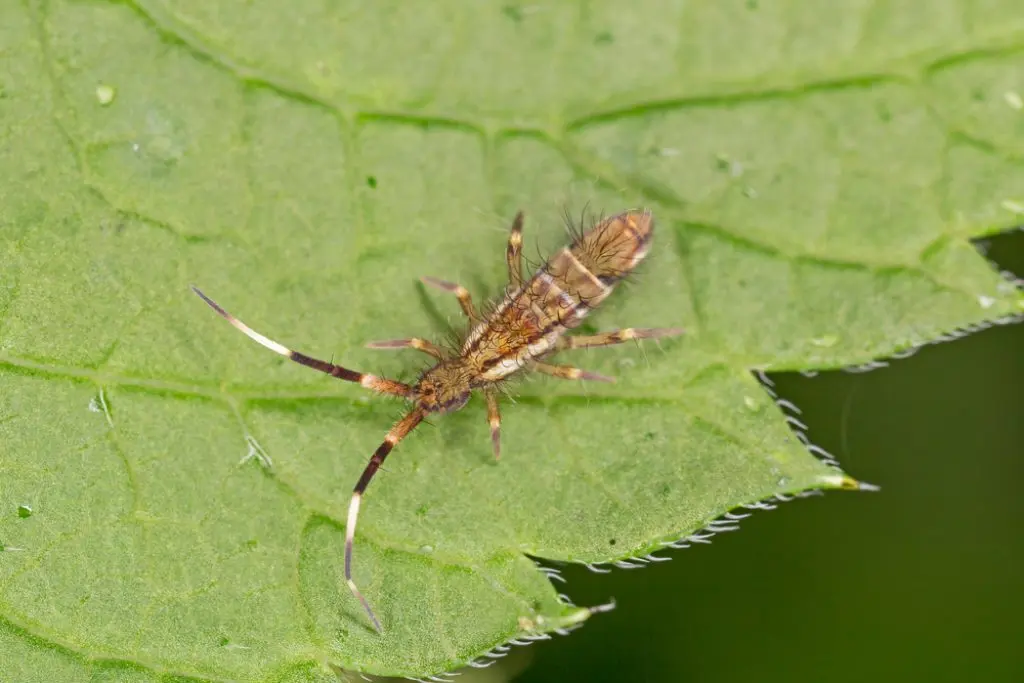
Identification
Springtails are wingless and 1/16-inch in length. They have the ability to jump from here and there. You may see them wandering while it’s a long drought searching for moisture.
So, they are usually seen in moist soil areas during the summer.
Another quick identification is, the dark bodies of springtails will stand out against snow when it is winter.
What Harm can Springtails Do to Your Plants?
Springtails prefer feeding on the organic material in soil instead of severely damaging plants. But they often chew the roots of the plants if the soil is acidic and wet.
The damage will appear as rounded, tiny pits on the roots. And, if the affected seedlings are young, they usually wilt or die.
How to Get Rid of Springtails?
Well, it’s not a serious problem when there are a few numbers of springtails in your garden. But if they are too many in numbers, then yes, it should be your concern.
- To discard springtails, improve the soil drainage by adding around 6-inches deep of well-rotted compost in the soil. Or you may include perlite to a planter equivalent to around 10% of its depth.
- If you are sure that the soil drainage is already very good, then you need to change your watering habits. See if the top 1-2 inches of soil seem dry and water only when they are dry.
- More than 4 inches deep mulching can encourage springtails. To keep the layer of mulch dry and clean, remove excessive mulches.
- Drench the infected plant-soil using insecticidal soap mix.
Soil Mites
Soil mites may appear as tiny black bugs on soil or tiny white bugs on soil. Not only these, but they can also be yellow, light brown, white, or green in color.
Soil mites reproduce very fast and take around one week to mature. The population doubles every two weeks. They are quite dangerous for plants as they usually suck sap in from foliage and stems.
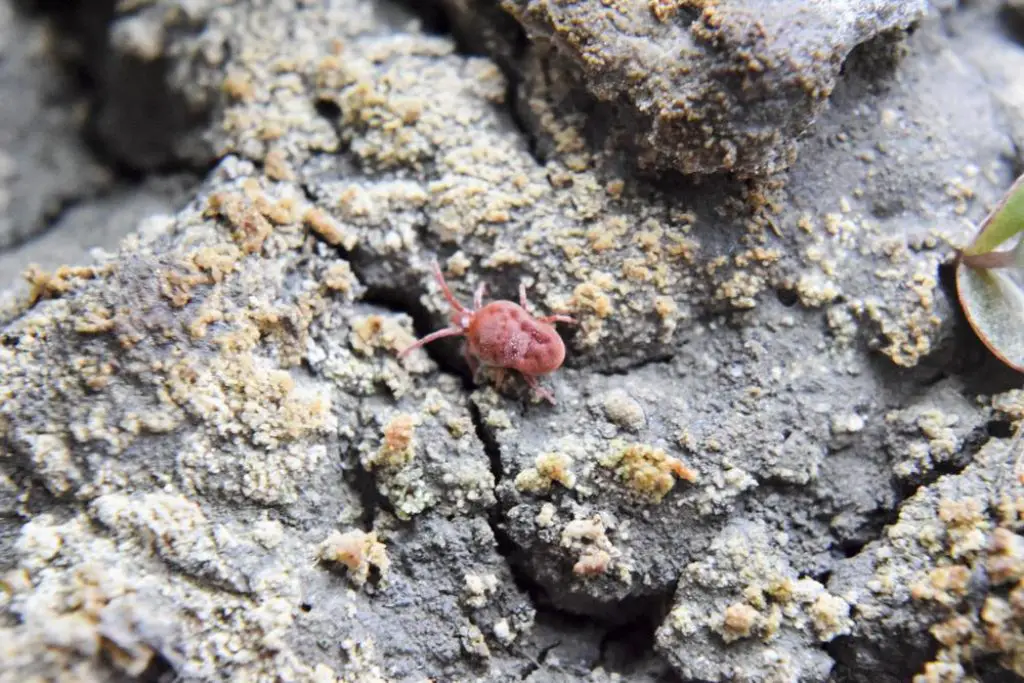
Identification
Soil mites look like little, tiny spiders. You can hardly see them without using a magnifying glass. For being closely related to spiders, they are also known as spider mites.
However, look very closely at the soil, you may see very tiny dots are moving around in there. Leaves are infected most of the time. You’ll find the affected leaves covered with a large number of spots.
What Will Soil Mites Do to Your Plants?
The fact is, soil mites are sometimes beneficial to your plants. For example, they help to break down the decaying organic matter in the soil for decomposition. But they even carry bacteria or parasites which can bring no good.
Moreover, over time, the affected leaves will eventually fall off.
How to Get Rid of Soil Mites?
Do not fret if you have observed soil mite/mites. There are ways to get rid of them.
- Set aside the affected plants from the healthy plants. Remove any heavily affected stems or branches from the plant. Put them somewhere like a ziplock bag so that the bugs can’t make an escape.
- For a light infestation, spray the water stream to get rid of as many mites as possible.
- Spray your plants using neem oil or insecticidal soap once a week. To kill all the remaining bugs and eggs, use them for at least 2-3 weeks.
Aphids
Tiny black bugs eating plants? Inspect if they are aphids. They can attack your houseplants and soil. Aphids can secrete ‘honeydew’ that can finally result in molding.
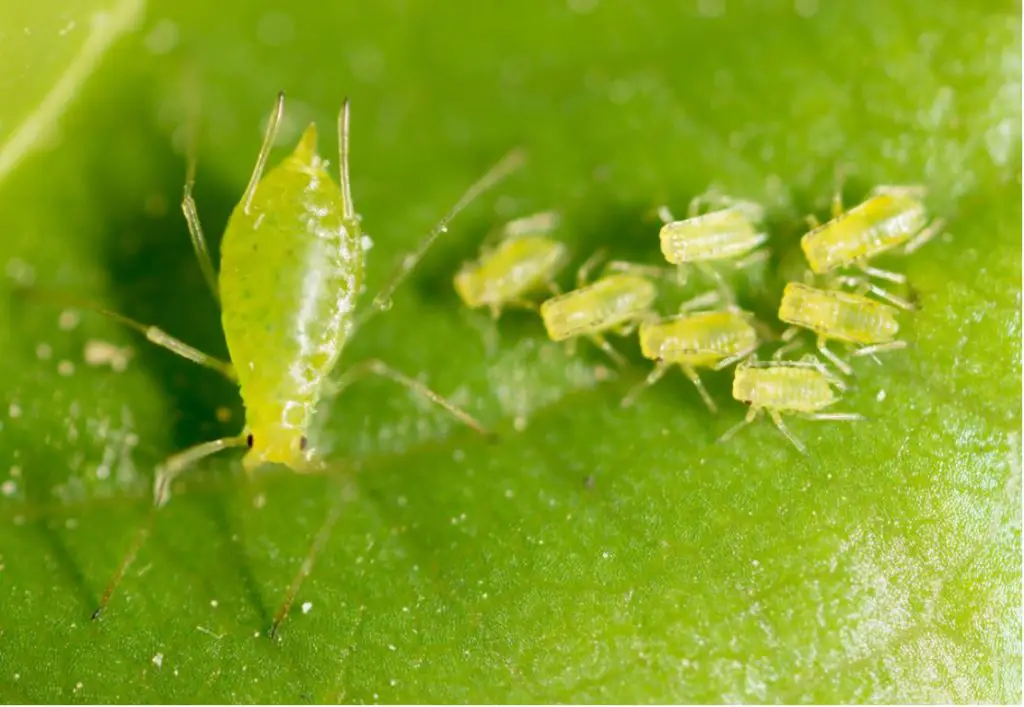
If it is winter, they will lay eggs in the soil but when it is summer, they do it on leaves. However, they can reproduce very quickly and form a large population.
Identification
Aphids are pear-shaped and around 1/16 inches in length. They can be black, yellow, brown, or green in color. They are usually covered with a waxy coat.
Adults and nymphs look almost similar. And, they might have wings, might not.
What Will Aphids Do to Your Plants?
Aphids generally feed on the roots or the undersides of the leaves. They can suck plant sap. For this, you will notice the leaves yellowing or curling.
Moreover, aphids can stunt the growth of your plant as well as deform the new buds.
How to Get Rid of Aphids?
Tiny bugs in houseplant soil are as pesky as possible. However, there are ways you can get rid of them.
- Isolate the affected plants from the others in the very first place.
- For minor infestations of leaves and stems, spray stream water using a hose. Or, you can wipe the aphids using a cotton swab that is dipped in rubbing alcohol.
- Badly infected stems and leaves should be pruned off using a garden shear. Spraying insecticidal soap or neem oil also be helpful. But you need to make sure that any hidden aphids or eggs are eradicated.
FAQ regarding Tiny Black Bugs in Plant Soil
Question: How do I get rid of bugs in my plant soil?
Answer: Spraying neem oil or soapy water can help to get rid of bugs in plant soil.
Question: How do you get rid of gnats in potting soil?
Answer: Pour organic insecticidal soap into the top of the soil.
Question: What is a soil mite?
Answer: Soil mites are tiny arthropods that are both beneficial and hazardous for your plants. They aid in breaking down the organic matter in soil. But if they are too many in numbers, it’ll bring annoyance.
Question: What are the black bugs on tomato plants?
Answer: The most common black bugs on tomato plants are aphids and flea beetles.
Question: How to get rid of these little black winged bugs?
Answer: Remove the top layer of the soil and dead leaves. Also, dry out the soil as these bugs like wet soil. Then kill the larvae using 3% hydrogen peroxide.
Question: What are the little red bugs on plants?
Answer: They are most likely spider mites.
Question: What are small black bugs in the Garden?
Answer: if you notice small black bugs in your garden, then chances are they are flea beetles. They can damage the young leaves.
Conclusion
Tiny black bugs in soil can do harm to your plants. So, prevention and quick identification is a great way to save the plants from little bugs in plant soil.
However, hopefully, this article helped you to know the ins and outs of this topic and rub off any confusion.
Try to take proper care of your plants from the very beginning to avoid any struggles in the future. Good luck!
Related Reading:
Black Spots on Succulents- 7 Causes With Cures
Mint Leaves Turning Brown: Reasons With Remedies
Problems with Blue Lake Pole Beans
Strawberry Plants Leaves Are Turning Brown
Types of Worms in Potted Plants

